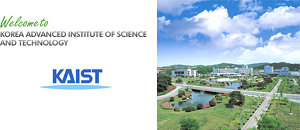qubit
Overclocked quantum bit
- Joined
- Dec 6, 2007
- Messages
- 17,865 (2.82/day)
- Location
- Quantum Well UK
| System Name | Quantumville™ |
|---|---|
| Processor | Intel Core i7-2700K @ 4GHz |
| Motherboard | Asus P8Z68-V PRO/GEN3 |
| Cooling | Noctua NH-D14 |
| Memory | 16GB (2 x 8GB Corsair Vengeance Black DDR3 PC3-12800 C9 1600MHz) |
| Video Card(s) | MSI RTX 2080 SUPER Gaming X Trio |
| Storage | Samsung 850 Pro 256GB | WD Black 4TB | WD Blue 6TB |
| Display(s) | ASUS ROG Strix XG27UQR (4K, 144Hz, G-SYNC compatible) | Asus MG28UQ (4K, 60Hz, FreeSync compatible) |
| Case | Cooler Master HAF 922 |
| Audio Device(s) | Creative Sound Blaster X-Fi Fatal1ty PCIe |
| Power Supply | Corsair AX1600i |
| Mouse | Microsoft Intellimouse Pro - Black Shadow |
| Keyboard | Yes |
| Software | Windows 10 Pro 64-bit |
Memristors are a fourth class of electric circuit, first hypothesized way back in the 1970's, which are a new addition to the transistors, capacitors, resistors etc that go into making a silicon chip. HP has put a great deal of resources into developing this technology and is expected to release memory-like memristor products in 2013, so it's not far off from commercial deployment. Now however, the Korean Advanced Institute of Science and Technology (KAIST) have found a way to use memristors to make what they describe as a "fully functional" flexible resistive random access memory (RRAM). This memory is built on a plastic substrate and can be randomly accessed, written to and erased. However, as this substrate is flexible, it can be bent and rolled up easily, opening up possibilities for use that haven't even been thought of yet.



One of the big holdups for this technology being released into commercial products though, is the problem of major interference between adjacent cells. This causes the performance of such products to fall way below what is required today, as the necessary transistors cannot switch fast enough. However, the team at KAIST claim to have fixed this problem, by developing memory which isn't affected by inter-cell interference. It achieves this improvement by using the properties of memristors alongside a single-crystal silicon transistor on flexible substrates.
Keon Jae Lee from KAIST's Department of Materials Science and Engineering, said that the:
At this time, there are no performance benchmarks of this new type of memory, or information of when it will go into production, suggesting that there are still a lot of refinements still needed to make this new technology commercially viable. The research was published in the October issue of Nano Letters ACS (paywall) and the institute's website can be found here: www.kaist.edu
When this technology does finally become available, expect to see a great deal of innovative products, based on the new found freedom of physical flexibility to be made with it. Interesting times are ahead.
Sources: TechEye, Tom's Hardware
View at TechPowerUp Main Site



One of the big holdups for this technology being released into commercial products though, is the problem of major interference between adjacent cells. This causes the performance of such products to fall way below what is required today, as the necessary transistors cannot switch fast enough. However, the team at KAIST claim to have fixed this problem, by developing memory which isn't affected by inter-cell interference. It achieves this improvement by using the properties of memristors alongside a single-crystal silicon transistor on flexible substrates.
Keon Jae Lee from KAIST's Department of Materials Science and Engineering, said that the:
result represents an exciting technology with the strong potential to realize all flexible electronic systems for the development of a freely bendable and attachable computer in the near future.
At this time, there are no performance benchmarks of this new type of memory, or information of when it will go into production, suggesting that there are still a lot of refinements still needed to make this new technology commercially viable. The research was published in the October issue of Nano Letters ACS (paywall) and the institute's website can be found here: www.kaist.edu
When this technology does finally become available, expect to see a great deal of innovative products, based on the new found freedom of physical flexibility to be made with it. Interesting times are ahead.
Sources: TechEye, Tom's Hardware
View at TechPowerUp Main Site
Last edited:


